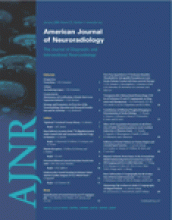Abstract
BACKGROUND AND PURPOSE: Whether vertebroplasty increases the risk of adjacent-level vertebral fractures remains uncertain. Biomechanical and clinical studies suggest an increased risk, but compelling data have not yet been put forth to settle this difficult issue. We believe that an analysis of the time interval between vertebroplasty and subsequent fractures may shed additional light on this debate. We specifically hypothesized that subsequent fractures would occur sooner and more frequently in the vertebrae adjacent to the treated level.
METHODS: We performed a retrospective analysis of the risk and timing of subsequent fractures in patients previously treated with vertebroplasty. Multiple linear regression was used to explore factors that influence the time to new fracture following vertebroplasty. Fractures were then divided on the basis of whether they occurred adjacent or nonadjacent to the treated level. Survival analysis was used to compare time to new fracture among the 2 groups, and the relative risk of both types of fracture was calculated.
RESULTS: In this study, 186 new vertebral fractures occurred in 86 (19.9%) of 432 patients. Seventy-seven (41.4%) fractures were of vertebrae adjacent to the level treated with vertebroplasty. Median times until diagnosis of new adjacent and nonadjacent level fractures were 55 days and 127 days, respectively. Time to fracture was significantly different between the 2 groups (logrank <0.0001). Distance of the new fracture from the treated level was also significantly associated with time to new fracture (P < .0001). Relative risk of adjacent level fracture was 4.62 times that for nonadjacent level fracture.
CONCLUSION: These data demonstrate an association between vertebroplasty and new vertebral fractures. Specifically, following vertebroplasty, patients are at increased risk of new-onset adjacent-level fractures and, when these fractures occur, they occur sooner than nonadjacent level fractures.
- Copyright © American Society of Neuroradiology












